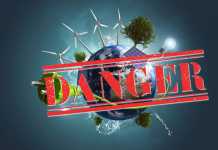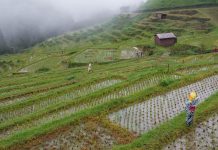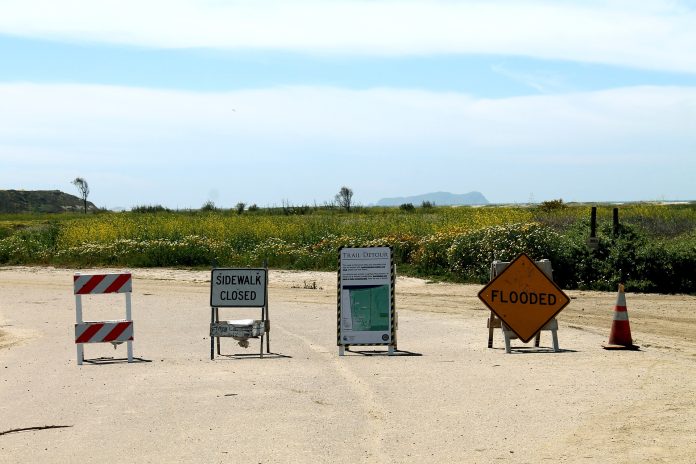The Los Angeles Times and The Seattle Times posted articles reporting that scientists are acknowledging recent weather conditions on the west coast, including swings from drought to atmospheric rivers causing flooding, are natural for the region. This is true, and demonstrates an accurate understanding of historical records for the state.
Unfortunately, amidst the factual reporting, the paper could not resist asserting extreme weather events will become more common or worse in the future due to climate change. Trend data does not support such claims.
Writer Louis Sahagún’s story, carried in both papers, discusses recent west coast weather “swings” with the official climatologist of California and other scientists. The scientists interviewed said such weather events have been common historically, as Sahagún writes:
Although the media and some officials were quick to link a series of powerful storms to climate change, researchers interviewed by The Times said they had yet to see evidence of that connection. Instead, the unexpected onslaught of rain and snow after three years of punishing drought appears akin to other major storms that have struck California every decade or more since experts began keeping records in the 1800s.
The papers’ accurate assessment is refreshing and buck the trend of false climate alarmism promoted by other mainstream media outlets covering the recent atmospheric river event, like the Washington Post (WaPo). As covered in the Climate Realism “Wrong, Washington Post – History and Data Contradict Claims of Worsening Atmospheric Rivers,” meteorologist Anthony Watts thoroughly debunks the claim made by the WaPo that atmospheric rivers have become more extreme as the climate has changed.
Watts wrote:
Regarding storms that depend on the global atmospheric water cycle, real world data shows that there has been no increase no increase in flooding; no increase in tropical cyclones and hurricanes; no increase in winter storms; and no increase in thunderstorms or tornadoes, or associated hail, lightning, and extreme winds from thunderstorms.
Further, a peer-reviewed paper published in 2020 used satellite and sounding data and found there has been no trend influencing tropical lower stratospheric water vapor, in the region these west coast atmospheric rivers originate.
The scientists interviewed by the Los Angeles Times acknowledge the fact that extreme weather and shifts between types of extreme weather events have been common throughout California’s history. For example, a senior hydrologist for the National Weather Service in Los Angeles told Sahagún that the recent atmospheric river event was “nothing as big as what we’ve gone through before,” and Sahagún goes on to explain that massive flooding events have happened in the region as long as records have been kept. Another scientists interviewed concurred that recent extreme weather events “don’t hold a candle to the kinds of extreme prolonged storms of the last century[.]”
Rather than ending the story on that informative note, unfortunately, Sahagún and the scientists he interviewed entered the prognostication game saying, “models predict more frequent megastorms fueled by warming oceans and a thirstier atmosphere.” These claims are refuted by the fact that, as the earth has already warmed for more than a hundred years, there is no evidence or data indicating a change in the trend of the extreme weather events discussed in the story.
As Climate Realism has discussed here, here, and here, among dozens of other instances covering media falsehoods about periods of drought and intense precipitation in the western United States, and especially California, these “swings” are part of natural cycles of the region.
In 2013, the U.S. Geological Survey even published research that showed massive flooding events caused by atmospheric river conditions hammer California approximately every 200 years, and that “smaller forms of these rivers regularly hit California, as well as the western coasts of other countries.”
The Los Angeles Times and The Seattle Times should be applauded for accurately reporting that recent droughts and atmospheric river events are perfectly natural occurrences that have impacted that state with some regularity throughout its history. Such factual reporting should arm public officials with the background they need implement policies that improve the state’s water infrastructure so that during wet periods more water is stored and available for use when future droughts occur, rather than having water just flow to the sea. By the same token, it is fair to critique the two papers for shifting the news story from one that is straightforward and informative, to another in a long line of unsupported alarming climate fairy tales.
























On my recommended reading list for today:
https://honestclimatescience.blogspot.com/2023/01/the-best-climate-science-and-energy.html